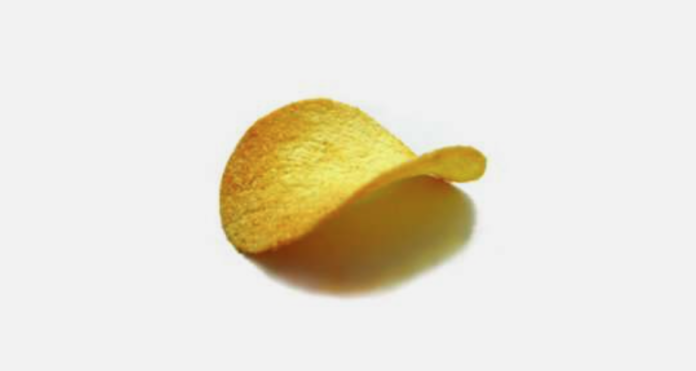To understand the nature of Pringles and other stackable chips, forget the notion that they come from actual potatoes in any recognizable way.
The Pringles Company (in an effort to avoid taxes levied against “luxury foods” like chips in the UK) once even argued that the potato content of their chips was so low that they are technically not even potato chips.
So if they’re not made of potatoes, what are they exactly?
The process begins with a slurry of rice, wheat, corn, and potato flakes that are pressed into shape.
This dough-like substance is then rolled out into an ultra-thin sheet cut into chip-cookies by a machine.
Potato Chips are Loaded with Cancer-Causing Chemical
One of the most hazardous ingredients in potato chips is not intentionally added, but rather is a byproduct of the processing.
Acrylamide, a cancer-causing and potentially neurotoxic chemical, is created when carbohydrate-rich foods are cooked at high temperatures, whether baked, fried, roasted or toasted. Some of the worst offenders include potato chips and French fries, but many foods cooked or processed at temperatures above 212°F (100°C) may contain acrylamide. As a general rule, the chemical is formed when food is heated enough to produce a fairly dry and brown/yellow surface. Hence, it can be found in:
-Potatoes: chips, French fries and other roasted or fried potato foods
-Grains: bread crust, toast, crisp bread, roasted breakfast cereals and various processed snacks
-Coffee; roasted coffee beans and ground coffee powder. Surprisingly, coffee substitutes based on chicory actually contains 2-3 times MORE acrylamide than real coffee.

How Much Acrylamide are You Consuming?
The federal limit for acrylamide in drinking water is 0.5 parts per billion, or about 0.12 micrograms in an eight-ounce glass of water. However, a six-ounce serving of French fries can contain 60 micrograms of acrylamide, or about FIVE HUNDRED times over the allowable limit.
Similarly, potato chips are notoriously high in this dangerous chemical. So high, in fact, that in 2005 the state of California actually sued potato chip makers for failing to warn California consumers about the health risks of acrylamide in their products. A settlement was reached in 2008 when Frito-Lay and several other potato chip makers agreed to reduce the acrylamide levels in their chips to 275 parts per billion (ppb) by 2011, which is low enough to avoid needing a cancer warning label.
The 2005 report “How Potato Chips Stack Up: Levels of Cancer-Causing Acrylamide in Popular Brands of Potato Chips,” issued by the California-based Environmental Law Foundation (ELF), spelled out the dangers of this popular snack. Their analysis found that all potato chip products tested exceeded the legal limit of acrylamide by a minimum of 39 times, and as much as 910 times! Some of the worst offenders at that time included:
-Cape Cod Robust Russet: 910 times the legal limit of acrylamide
-Kettle Chips (lightly salted): 505 times
-Kettle Chips (honey dijon): 495 times
Beware: Baked Chips May Be WORSE than Fried!
If you think you can avoid the health risks of potato chips by choosing baked varieties, which are typically advertised as being “healthier,” think again. Remember that acrylamide is formed not only when foods are fried or broiled, but also when they are baked. And according to U.S. Food and Drug Administration (FDA) data on acrylamide levels in foods, baked chips may contain more than three times the level of acrylamide as regular chips!







